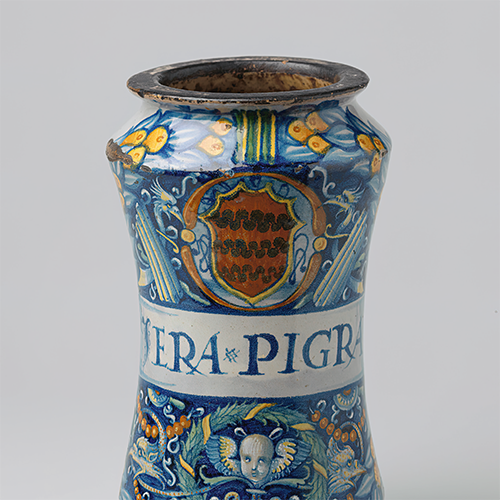A Bitter Pill
Residues in two Apothecary Jars with the Inscriptions JERA PIGRA and EL HIRAE PICRAE
DOI:
https://doi.org/10.52476/trb.12231Abstract
Residue was found in two cylindrical apothecary jars with similar inscriptions in the Rijksmuseum’s collection. There is a considerable difference in the age of these jars: the majolica albarello was made in Italy in the early sixteenth century, whereas the albarello made of tin-glazed earthenware was made in Delft more than two centuries later. Their inscriptions (JERA PIGRA and EL/ HIRAE PICRAE respectively) refer to the pharmaceutical preparation ‘hiera picra’ (Holy Bitter). The history of this medicine, which was said to give supernatural powers, goes back more than two thousand years. The main ingredient of this preparation was aloe Socotrina, which gave it its bitter taste. The research included the technique, shape, inscriptions, use and contents of these objects. Samples were taken from the residues found in both objects in order to determine the chemical composition. This was achieved using gas chromatographymass spectrometry (THM-GCMS) in combination with pyrolysis. A link to hiera picra could not be established, but the research provided a great deal of information about the background of both objects.
Downloads







